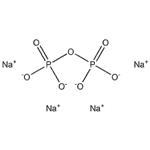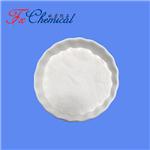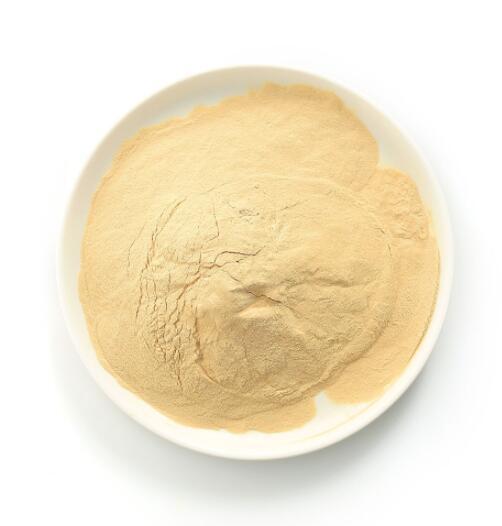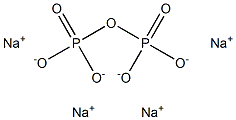Introduction of Tetrasodium pyrophosphate
Apr 26,2022
General description
Tetrasodium pyrophosphate appears as odorless, white powder or granules. mp: 995°C. Density: 2.53 g/cm3. Solubility in water: 3.16 g/100 mL (cold water); 40.26 g/100 mL boiling water. Used as a wool de-fatting agent, in bleaching operations, as a food additive. The related substance tetrasodium pyrophosphate decahydrate (Na4P2O7*10H2O) occurs as colorless transparent crystals. Loses its water when heated to 93.8°C. Sodium diphosphate is an inorganic sodium salt comprised of a diphosphate(4-) anion and four sodium(1+) cations. More commonly known as tetrasodium pyrophosphate, it finds much use in the food industry as an emulsifier and in dental hygiene as a calcium-chelating salt. It has a role as a food emulsifier, a chelator and a food thickening agent. It contains a diphosphate(4-).
Chemical and Physical property
White powder or crystal. The relative density is 2.534 and the melting point is 980 ℃. Colorless transparent crystal or white crystalline powder. It is easily soluble in water. At 20 ℃, the solubility of 100g water is 6.23g, and its aqueous solution is alkaline; Insoluble in alcohol. The aqueous solution is still stable below 70 ℃, and it will be hydrolyzed to disodium hydrogen phosphate when boiled. It is easy to absorb moisture and deliquesce in the air. It can form complex with alkaline earth metal ions; White silver pyrophosphate is generated when it meets Ag +. It can react with metal ions. The pH value of its 1% aqueous solution is 10.0-10.2. It has the general properties of ordinary polyphosphate, that is, emulsifying and dispersing, preventing fat oxidation, improving protein adhesion, and inhibiting food oxidation and fermentation at high Ph.
Application and Pharmacology
Tetrasodium pyrophosphate is used to prepare electroplating solution, which can form complex with iron. Wool textile industry is used as wool degreasing agent and bleaching agent. The paper industry is used for bleaching paper and plant fibers. Printing and dyeing industry is used as auxiliaries in printing and dyeing and fine bleaching. Daily chemical industry is used as toothpaste additive, which can form colloid with calcium hydrogen phosphate and play a stabilizing role. It can also be used in synthetic detergent and production of shampoo and other products. Used as water softener in water treatment. Used as rust remover in machining. Used as dispersant and emulsifier in chemical production. It can also be used as water treatment agent, oil drilling and other aspects. It can also be used as quality improver, emulsifier, buffer, chelating agent and so on in the food industry:
1.Tetrasodium pyrophosphate promotes light meromyosin crosslinking by microbial transglutaminase. Phosphates are commonly included in meat processing, where oxidation is inevitable, to improve water binding. The interactive roles of protein oxidation and tetrasodium pyrophosphate (TSPP) on the crosslinking pattern of myosin mediated by transglutaminase (TGase). Mild oxidation at 1 mM H2O2 facilitated the TGase-initiated crosslinking, with the dominate crosslinking site shifted from S1 (in non-oxidized myosin) to Rod. The introduction of TSPP alleviated the oxidation stress on proteins, and was conductive to the crosslinking reaction notably at the LMM domain. The crosslinking sites in untreated myosin were identified as Gln-613 (S1) and Gln-1498 (LMM) by amino-acid sequence analysis, while strongly oxidation resulted in the loss of Gln-1498. Contrastively, four new reactive crosslinking sites were generated by TSPP, one (Gln-558/Gln-567) located on S1 and three (Gln-1362, Gln-1374, and Gln-1423/Gln-1426) on LMM. Yet, Gln-1362 was eliminated under strong oxidation at 50 mM H2O[1].
2.The ability to perform effective flossing depends on the human skills and dental floss constitution, which includes physical structure, shape, flexibility and presence of an antimicrobial agent. Dental flosses that slide easily between interproximal contacts without shredding are more effective and comfortable in the cleaning of oral tissues. Texturized dental floss made from nylon and entangled floss made from polypropylene could be commonly found for oral hygiene; both may have antimicrobial agents (such as triclosan, chlorhexidine and tetrasodium pyrophosphate) added to reduce the microbial colonization in the subgingival sulcus and in the interproximal spaces. Texturized nylon-based flosses may shred during dental flossing and fail in the mechanical removal of biofilm. In addition, they may fail to release the antimicrobial agent during flossing[2].
3.Tetrasodium pyrophosphate (TSPP) is widely used as an emulsifying salt (ES) in process cheese. Previous reports have indicated that TSPP exhibits some un-usual properties, including the gelation of milk proteins at specific ES concentrations. We studied the effect of various concentrations (0.25–2.75%) of TSPP and cooking times (0–20 min) on the rheological, textural, and physical properties of pasteurized process Cheddar cheese using a central composite rotatable experimental design. Cheeses were made with a constant pH value to avoid pH as a confounding factor. Modeling of the textural properties of process cheese made with TSPP exhibited complex behavior, with polynomial models (cubic) giving better predictions (higher coefficient of determination values) than simpler quadratic models. Meltability indices (degree of flow from the UW MeltProfiler (University of Wisconsin–Madison), loss tangent value at 60°C from rheological testing, and Schreiber melt area) initially decreased with increasing TSPP concentrations, but above a critical ES concentration (~1.0%) meltability increased at higher TSPP concentrations[3].
Synthesis
Tetrasodium pyrophosphate is prepared by drying disodium hydrogen phosphate aqueous solution to obtain anhydrous disodium hydrogen phosphate, which is then dehydrated and polymerized at high temperature. It is divided into one-step and two-step methods. The drying and polymerization completed in one equipment is called one-step method, and the drying and polymerization completed in two equipment is called two-step method. The one-step process has simple equipment and short process, but the quality is not very stable. The two-step equipment is complex, the process is long and the product quality is stable. The two-step method is mostly used for sodium pyrophosphate in food industry. The reaction formula is following:
Figure 1 the synthesis route of Tetrasodium pyrophosphate
Safety and Storage
ice was 40 mg / kg; Rat oral LD50 > 400mg / kg. ADI value is 0.70mg/kg (refers to the total amount in food and food additives, calculated in phosphorus, and pay attention to the balance with ca. Irritating to eyes, respiratory system and skin. case of contact with eyes, rinse immediately with plenty of water and seek medical advice.ice was 40 mg / kg; Rat oral LD50 > 400mg / kg. ADI value is 0.70mg/kg (refers to the total amount in food and food additives, calculated in phosphorus, and pay attention to the balance with ca. Irritating to eyes, respiratory system and skin. case of contact with eyes, rinse immediately with plenty of water and seek medical advice.
References
1.Shirashoji N., Aoyagi H. & Jaeggi J. J. et al., "Effect of tetrasodium pyrophosphate concentration and cooking time on the physicochemical properties of process cheese," Journal of Dairy Science, Vol.99, No.9(2016), pp.6983-6994.
2.Pedrazzi V., Corsi L. P. & Pedrazzi H. et al., "Clinical Evaluation of Residual Tetrasodium Pyrophosphate Released from Two Different Anticalculus Flosses," Brazilian Dental Journal, Vol.26, No.2(2015), pp.116-120.
3.Wang Q., Sun Y. & Shao J. et al., "Tetrasodium pyrophosphate promotes light meromyosin crosslinking by microbial transglutaminase," Food Chemistry, Vol.346(2021), p.128910.
- Related articles
- Related Qustion
- Tetrasodium Pyrophosphate: Enhancing Nutrient Bioavailability and Protein Stability in the Food Industry Oct 23, 2024
Tetrasodium pyrophosphate boosts iron absorption and enhances protein stability, highlighting its value in fortification and preservation in food industry applications.
3,4-Dihydro-2H-pyran is a natural product found in Gossypium hirsutum with data available. Dihydro-2h-pyran appears as a clear colorless liquid with an ethereal odor....
Apr 26,2022Organic Synthesis IntermediateYeast extracts consist of the cell contents of yeast without the cell walls;they are used as food additives or flavorings, or as nutrients for bacterial culture media. They are often used to create savory flavors and umami taste sensations,....
Apr 26,2022Biochemical EngineeringTetrasodium pyrophosphate
7722-88-5You may like
Tetrasodium pyrophosphate manufacturers
- Tetrasodium pyrophosphate
-

- 2025-12-13
- CAS:7722-88-5
- Min. Order:
- Purity: 0.99
- Supply Ability:
- Tetrasodium pyrophosphate
-

- $0.00 / 1KG
- 2025-12-13
- CAS:7722-88-5
- Min. Order: 1KG
- Purity: 98%min
- Supply Ability: 30tons/month
- Tetrasodium pyrophosphate
-

- $25.00 / 1kg
- 2025-12-11
- CAS:7722-88-5
- Min. Order: 100kg
- Purity: 99.5%
- Supply Ability: 100 mt






